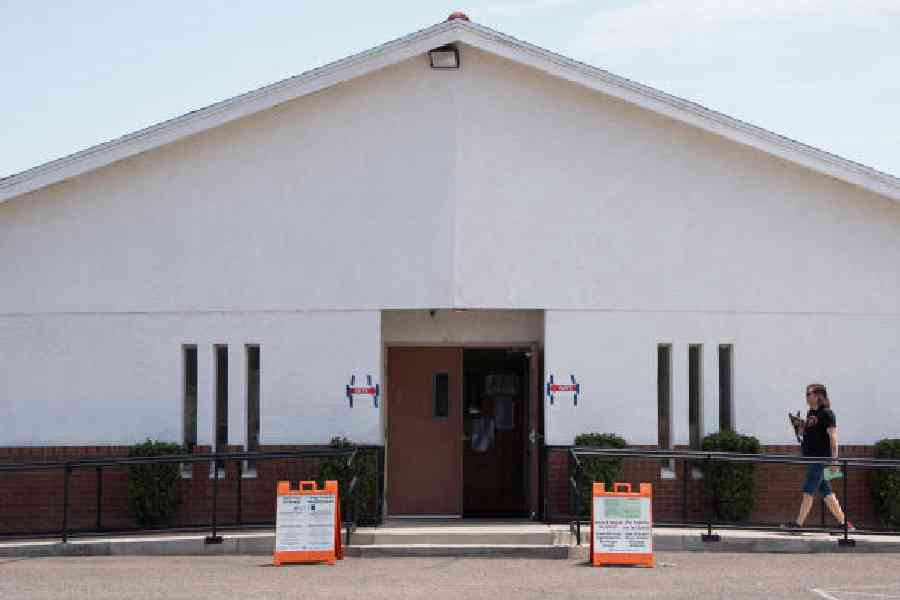Lisa Tofano was baptised, confirmed and married at the Good Shepherd Lutheran Church on Lake Opeka in Des Plaines, Illinois. When she and her husband, John, visited the church last fall, however, it wasn’t to worship but rather to celebrate their 34th wedding anniversary at what the church had become: the Foxtail on the Lake, a restaurant.
The transformation was not easy: The shuttered church needed an 18-month, $6 million gut renovation, and a new 3,000sqft kitchen, before it could start offering items like paella and beef shawarma, said David Villegas, a managing partner of Foxtail, who said he had been “a bit nervous” before the restaurant’s opening in November about the reaction of former parishioners. For Tofano, though, “a church is more about
the people than the building”, she said.
Across the country, the number of empty churches and other houses of worship is sharply rising, and these structures, often unique architectural gems, have become huge draws for business owners.
Eileen Lindner, a sociologist and Presbyterian minister who is a former editor of the Yearbook of American & Canadian Churches, which analyses census data on religious organisations and houses of worship, said that she expected as many as 100,000 Protestant church properties to close by 2030. That figure, which may come close to 20 per cent of all existing Protestant churches, is a significant increase over the past decade, Lindner said.
The closings stem largely from a drop in church attendance during the Covid pandemic, and fewer people, especially younger adults, affiliated with religious organisations than in the past. The decline has been happening for decades. In the late
1940s, 76 per cent of Americans said they belonged to a church, synagogue or mosque, but by 2020 that number had dropped to 47 per cent, Gallup polling found.
The result is that congregations are closing or merging with others, leaving some capacious sanctuaries and outlying buildings underused or unused altogether. Many religious organisations are having to rethink how to make the best use of their largest assets — the buildings as well as the underlying land — and give them a second life.
Madeline Johnson, who oversees research at the University of Notre Dame on properties owned by the Catholic church as well as other religious organisations, said not much is off limits for what a church could become. Of the many denominations, the Catholic church might have the most stringent restrictions, Johnson said. The church stipulates that new uses “may be profane but not sordid”. But even that limitation affords a lot of leeway.
With their vaulted ceilings and stained glass windows, the architectural forms of churches have long attracted business owners, despite structural problems that
can add significantly to renovation costs.
When a product design consulting firm, argodesign, outgrew its offices in Austin, Texas, its founders were deliberate in their search for a new space. They saw potential in an abandoned 1930s-era church with a “rose window”, a round shape often found in churches, near the city’s bustling downtown South Congress area. The structure could accommodate up to 70 employees and had a parking space for a car the team had constructed together, said Sonia Prusaitis, the general manager of the office. The firm moved into the property in 2022.
Around the world, houses of worship have been converted to restaurants, breweries, hotels, art centres, theatres and even sports complexes. Some abandoned churches have been transformed into mixed-use developments, blending retail and residential space, and affordable housing.
In 1983, the Gothic revival Episcopal Church of the Holy Communion in New York City was converted into a disco called the Limelight, known for its sometimes drug-fuelled party scene. The structure has since gone through several iterations, including a shopping mall, a gym and a market. In St. Louis, an abandoned church became an indoor skatepark called Sk8 Liborius. (It burned down last year.) And a branch of the Black Art Library in Detroit opened this year in a repurposed church.
The process of transforming something old into something new can hit a number of bumps along the way. New structures may need zoning changes, such as when a church is in a residential neighbourhood that doesn’t otherwise permit commercial uses. For instance, Foxtail, the restaurant in Des Plaines, Ill., needed a zoning variance to sell alcohol.
A new business sometimes needs city, state or federal approval before alterations can take place if the church is a landmark structure or in a historic neighbourhood. Churches are often deconsecrated before the buildings even hit the market.
“One of the great difficulties in repurposing a church is that it’s a pretty specific type of space,” said Ari S. Heckman, a co-founder and the chief executive of the Ash hotel group, which turned a once grand old church in New Orleans into the Hotel Peter and Paul. The space has an eclectic style that merges religious vestiges with modern amenities.
“It’s hard to subdivide in a way that makes sense for a lot of uses, which may be why the original developer couldn’t make it work,” he said.
New York Times News Service










